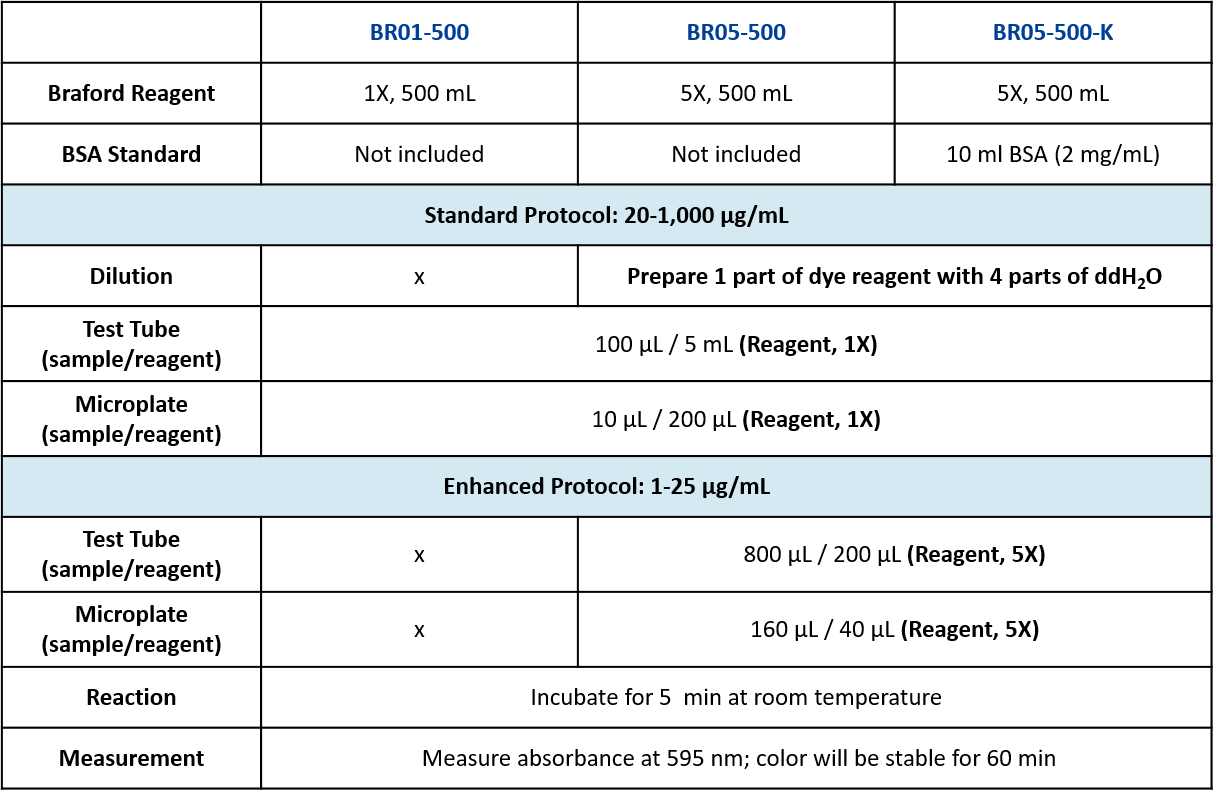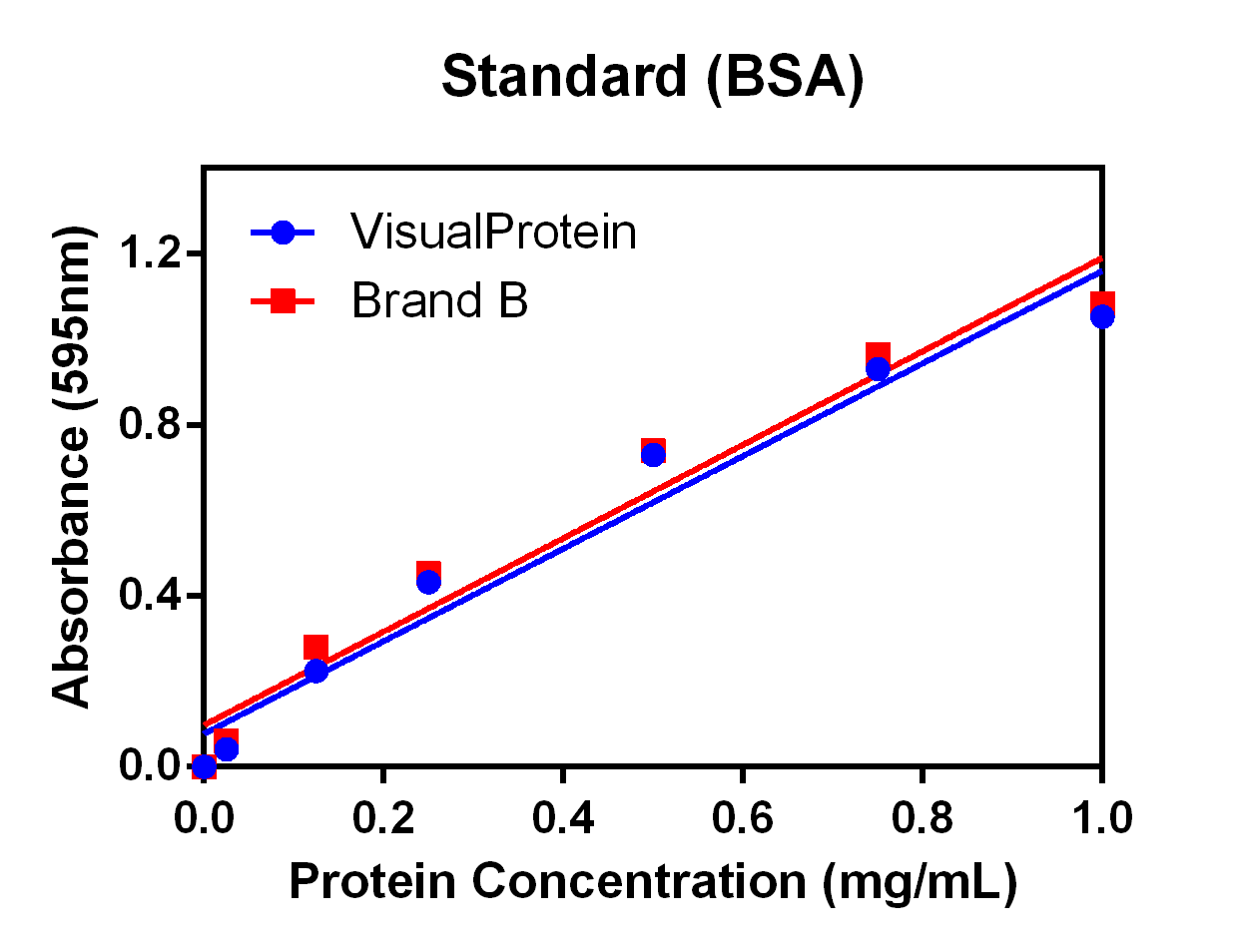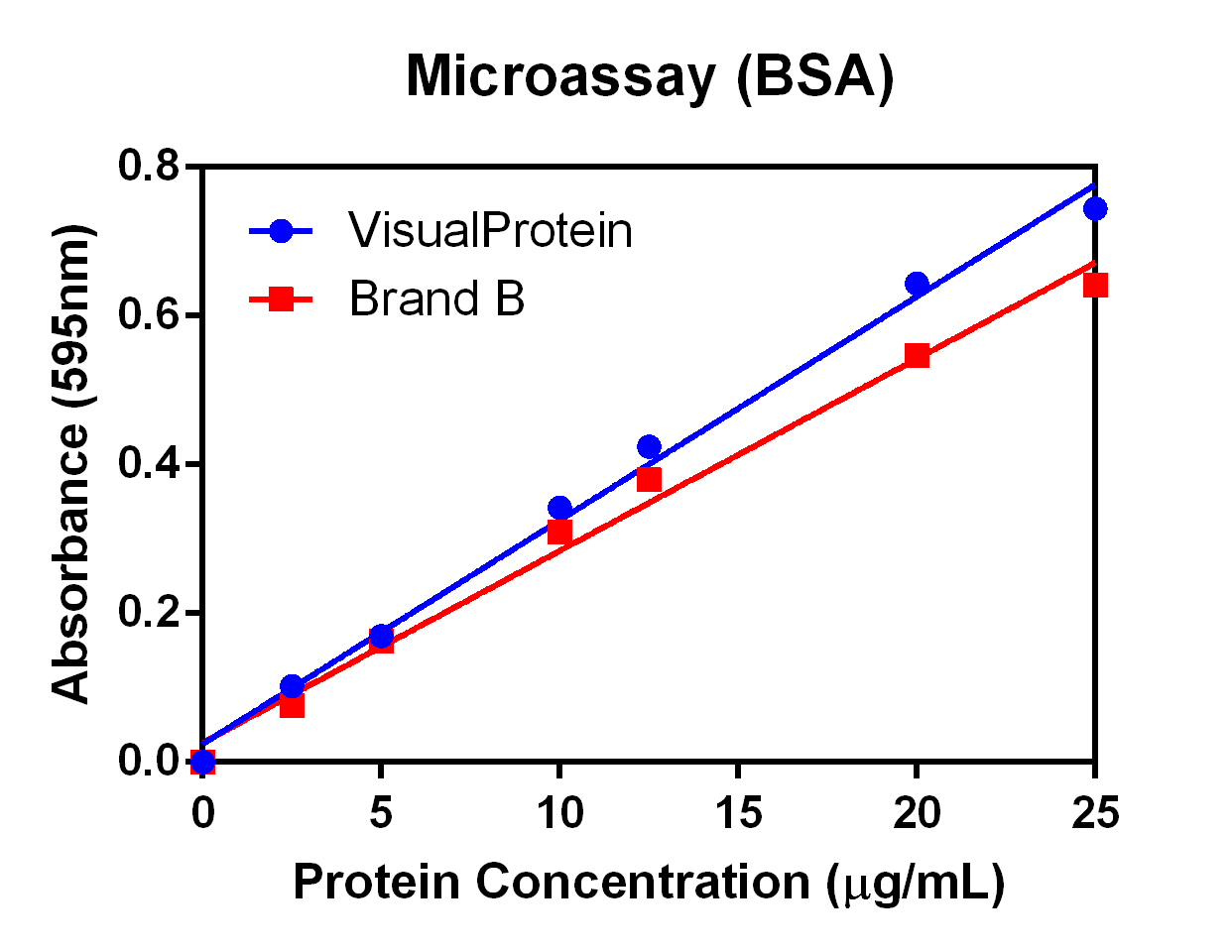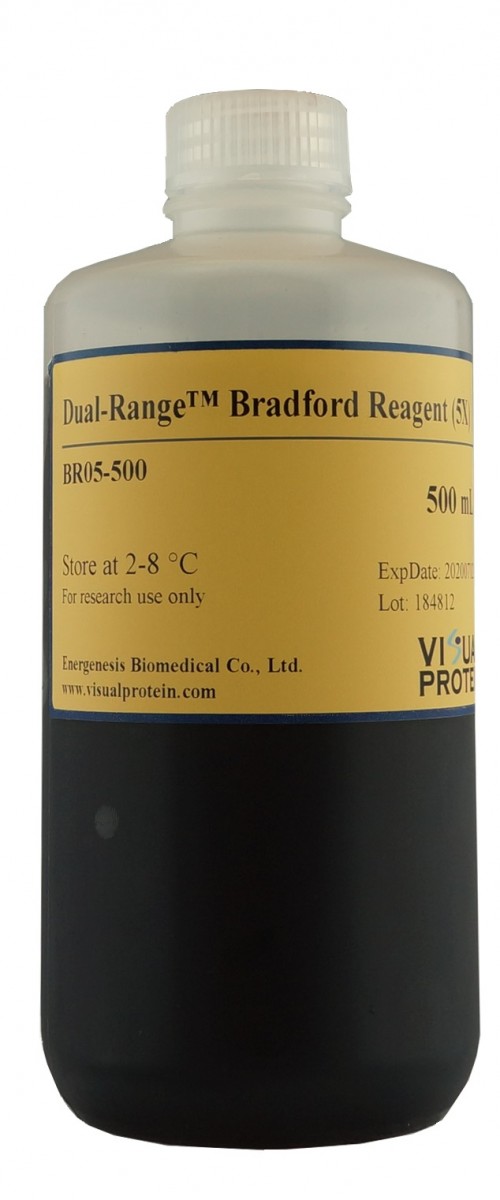Product
Protein Quantification
Dual-Range™ Bradford Protein Assay is a fast protein quantification method. It based on the method of Bradford, coomassie-binding with protein in an acidic solution. The measurement of absorbance shifts from 465 nm (brown color) to 595 nm (blue color) when binding to protein occurs. In addition, the coloration differs greatly depending on the basic and aromatic amino acid residues of protein. Dual-Range™ Bradford Protein Assay provides a wide protein quantification range from 1-1,000 μg/mL and the measured absorbance at 595 nm is stable for 5 to 60 minutes after the binding reaction starts.

Special Characteristic :
- Simple protocol: only takes 5 minutes for the colorimetric reaction
- High tolerance to reducing agent: Bradford is compatible with DTT and DAE which used for protein isolation method
Order Information :
| Cat. No. | Product Name | Description |
| BR01-500 |
Dual-Range™ Bradford Reagent (1X) |
500mL x 1 |
| BR05-500 |
Dual-Range™ Bradford Reagent (5X) |
500mL x 1 |
| BR05-500-K |
Dual-Range™ Bradford Protein Assay Kit (5X) |
500mL BR05-500 + 10 mL BSA (2mg/mL) |
Quick Instruction Guide:

Product Detail :

Figure 1. Standard curve of bovine serum albumin (BSA) by using a standard protocol with a working range from 20 to 1,000 μg/ml.

Figure 2. Standard curve of bovine serum albumin (BSA) by using enhanced protocol with working range from 1 to 25 μg/ml.
Reference
1. Li, Jie-Ning, et al. "TARBP2 Suppresses Ubiquitin-Proteasomal Degradation of HIF-1α in Breast Cancer." International Journal of Molecular Sciences 23.1 (2022): 208. LINK
2. Boonsanit, Phurich, Chanpen Chanchao, and Supanut Pairohakul. "Effects of hypo-osmotic shock on osmoregulatory responses and expression levels of selected ion transport-related genes in the sesarmid crab Episesarma mederi (H. Milne Edwards, 1853)." Comparative Biochemistry and Physiology Part A: Molecular & Integrative Physiology 288 (2024): 111541. LINK
3. Boonsanit, Phurich, and Supanut Pairohakul. "Effects of salinity on physiological responses in the sesarmid crab Episesarma mederi (H. Milne Edwards, 1853)." Marine Biology Research 19.8-9 (2023): 480-490. LINK
